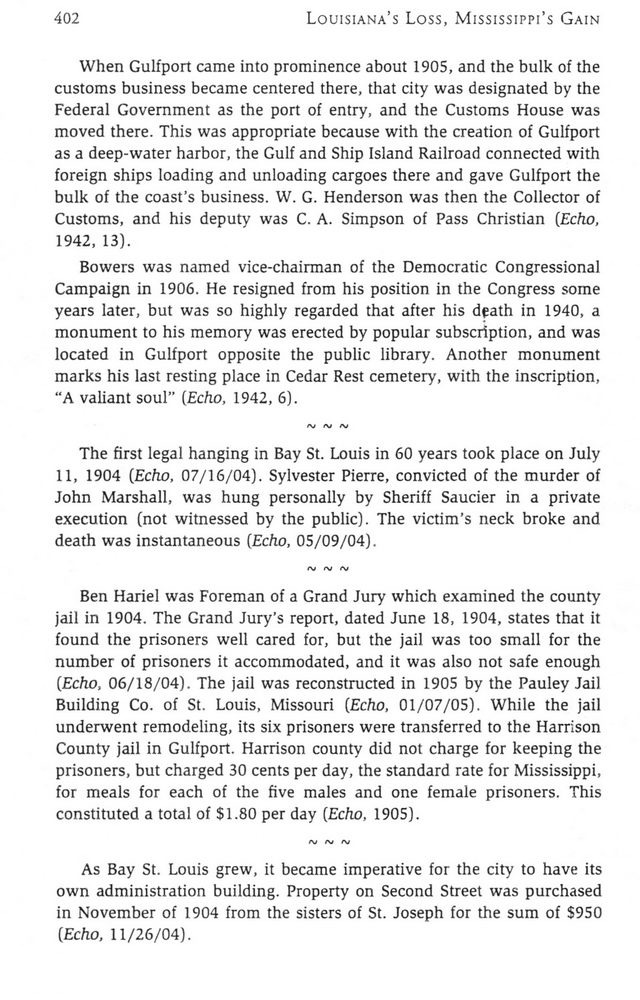This text was obtained via automated optical character recognition.
It has not been edited and may therefore contain several errors.
402
Louisiana?s Loss, Mississippi?s Gain
When Gulfport came into prominence about 1905, and the bulk of the customs business became centered there, that city was designated by the Federal Government as the port of entry, and the Customs House was moved there. This was appropriate because with the creation of Gulfport as a deep-water harbor, the Gulf and Ship Island Railroad connected with foreign ships loading and unloading cargoes there and gave Gulfport the bulk of the coast?s business. W. G. Henderson was then the Collector of Customs, and his deputy was C. A. Simpson of Pass Christian (Echo, 1942, 13).
Bowers was named vice-chairman of the Democratic Congressional Campaign in 1906. He resigned from his position in the Congress some years later, but was so highly regarded that after his death in 1940, a monument to his memory was erected by popular subscription, and was located in Gulfport opposite the public library. Another monument marks his last resting place in Cedar Rest cemetery, with the inscription, ?A valiant soul? {Echo, 1942, 6).
/v
The first legal hanging in Bay St. Louis in 60 years took place on July 11, 1904 {Echo, 07/16/04). Sylvester Pierre, convicted of the murder of John Marshall, was hung personally by Sheriff Saucier in a private execution (not witnessed by the public). The victim?s neck broke and death was instantaneous {Echo, 05/09/04).
(V (V IV
Ben Hariel was Foreman of a Grand Jury which examined the county jail in 1904. The Grand Jury?s report, dated June 18, 1904, states that it found the prisoners well cared for, but the jail was too small for the number of prisoners it accommodated, and it was also not safe enough {Echo, 06/18/04). The jail was reconstructed in 1905 by the Pauley Jail Building Co. of St. Louis, Missouri {Echo, 01/07/05). While the jail underwent remodeling, its six prisoners were transferred to the Harrison County jail in Gulfport. Harrison county did not charge for keeping the prisoners, but charged 30 cents per day, the standard rate for Mississippi, for meals for each of the five males and one female prisoners. This constituted a total of $1.80 per day {Echo, 1905).
f\j f\j r\j
As Bay St. Louis grew, it became imperative for the city to have its own administration building. Property on Second Street was purchased in November of 1904 from the sisters of St. Joseph for the sum of $950 {Echo, 11/26/04).

Gardebled Louisiana's-Loss-Mississippi's-Gain-page-402